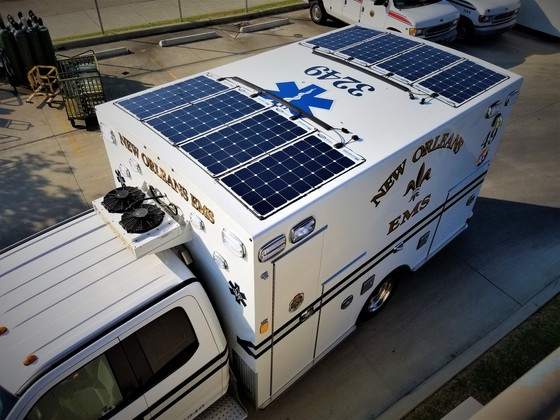New Orleans EMS uses idle reduction technology
 New Orleans EMS introduces idle reduction technology on 16 ambulances, helping the City significantly reduce fuel costs and air pollution. Idling occurs when your engine is running but your vehicle isn’t moving. Idling wastes fuel and causes greenhouse gas emissions that contribute to smog and climate change.
The first ambulance was outfitted in June 2018. To date, 16 ambulances have been retrofitted, and as of this week, the city has saved 13340 gallons of diesel which translates to $38,953 in cost savings. "The City and EMS are taking a step in the right direction by deploying idle reduction technology in 16 EMS vehicles," says Latoya Cantrell, Mayor of New Orleans.
This new technology, using solar energy, allows for all of the vital onboard equipment to be powered by an onboard battery when the vehicle is in park, without having the engine on and without the negative effects of idling.
Not only has NOEMS reduced consumption of fossil fuels, they have also reduced carbon monoxide emissions by 147 tons. Finally, these ambulances have accrued 14,049 hours of idle mitigation which decreases the frequency at which preventative maintenance is needed.
Ambulances typically idle for a great portion of their work day, for example, when picking up or dropping off patients or when filling out paperwork at the hospitals. Ambulances also idle in order to keep vital onboard equipment powered and functioning, like life-support systems, temperature controlled medicine compartments, and telecommunications.
It's estimated that for each hour an ambulance idles, it burns 1.5 gallons of fuel and puts about 35 miles worth of wear-and tear on the engine. This is such an important project for our ambulance fleet as we move forward as a healthier and cleaner city.
# # #
|